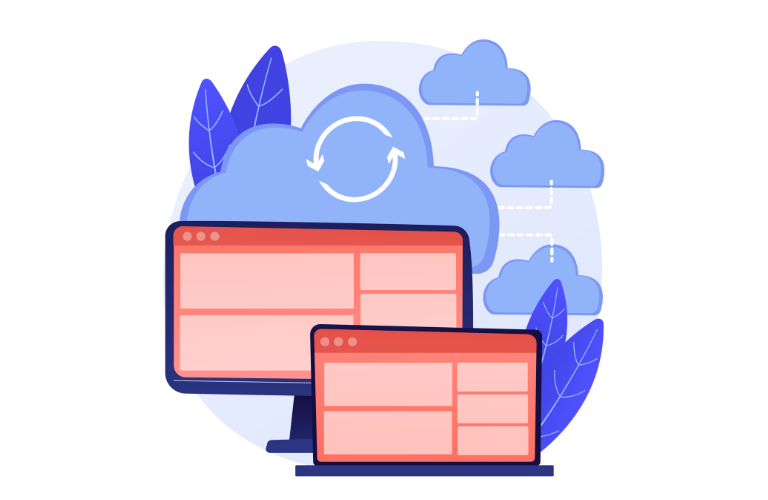Deciding between Laravel Forge vs. Laravel Cloud for deploying your Laravel application in 2025 can be tricky. Both platforms, crafted by the Laravel team, streamline deployment but serve distinct purposes. Laravel Cloud offers a fully managed, hassle-free experience, while Laravel Forge grants detailed control over server configurations.
This article dives into their features, pricing, and real-world use cases to help you choose the right deployment path. Whether you’re building an MVP or managing client apps, we’ll provide actionable insights to save time and optimize performance.
Table of Contents
Why Compare Laravel Forge vs. Laravel Cloud?
Deploying a Laravel app involves more than pushing code. Slow performance, complex setups, and security risks can stall your project. Laravel Forge vs. Laravel Cloud tackles these challenges differently. Laravel Cloud automates infrastructure tasks, letting developers focus on coding. Laravel Forge, conversely, empowers those needing custom server setups. Choosing the right tool prevents costly errors and ensures your app runs smoothly.
Understanding Laravel Cloud
Launched in February 2025 at Laracon US, Laravel Cloud is a fully managed platform tailored for Laravel apps. It eliminates DevOps tasks like server provisioning, database setup, and caching. Connect your GitHub repository, and Laravel Cloud handles autoscaling, security, and zero-downtime deployments.
Key Features of Laravel Cloud:
- Fully managed infrastructure for Laravel apps
- Autoscaling and auto-hibernation for cost savings
- Built-in MySQL and serverless Postgres databases
- Automatic SSL, firewall, and DDoS protection
- Pricing starts at $0 with usage-based costs
Laravel Cloud suits developers prioritizing speed and simplicity, ideal for SaaS products, MVPs, or teams without DevOps expertise.
Understanding Laravel Forge
Laravel Forge, a staple in the Laravel ecosystem, is a server management and deployment tool. It provisions servers on providers like DigitalOcean, AWS, or Linode through a user-friendly interface. Supporting Laravel, Symfony, WordPress, and more, Forge offers control over server configurations.
Key Features of Laravel Forge:
- Supports multiple frameworks and hosting providers
- Manual scaling with customizable server setups
- Default firewall and SSL support
- Integration with Envoyer for zero-downtime deployment
- Pricing starts at $12/month plus server costs
Forge is ideal for developers needing flexibility, such as agencies managing multiple apps or teams with specific infrastructure needs.
Laravel Forge vs. Laravel Cloud: Key Differences
To pick between Laravel Forge vs. Laravel Cloud, let’s compare their core aspects:
Setup Complexity
Laravel Cloud requires minimal effort. Link your GitHub repo, select a region (e.g., EU Central Frankfurt), and deploy in under a minute. Forge involves more steps, requiring a server provider account and basic server knowledge.
Scalability
Laravel Cloud autoscales based on traffic and hibernates during low usage to cut costs. Forge relies on manual scaling, offering precise control but demanding more time.
Security
Laravel Cloud provides automatic SSL certificates, firewalls, and DDoS protection. Forge offers default firewall rules and SSL but requires manual setup for advanced security.
Cost
Laravel Cloud’s Sandbox plan starts at $0 with usage-based pricing (e.g., $5/month for database compute). Forge costs $12/month plus server fees, making it pricier for small projects but predictable for larger ones.
Supported Technologies
Laravel Cloud is Laravel-exclusive. Forge supports Laravel, PHP, HTML, Symfony, and WordPress, catering to diverse projects.
Deploying with Laravel Cloud: Step-by-Step
Let’s deploy a simple Laravel notes app with a Filament admin panel on Laravel Cloud, highlighting its ease and time-saving features. This mirrors the reference content’s real-world example.
Steps to Deploy on Laravel Cloud:
- Connect GitHub: In the Laravel Cloud dashboard, authorize GitHub and select your repository.
- Configure App: Name your app, choose a region (e.g., US East Ohio), and accept the auto-assigned domain.
- Deploy: Click “Deploy” to build and launch. A basic app deploys in ~48 seconds.
- Set Environment Variables: Go to Settings > Environment Variables. Add APP_NAME=InspirationalNotes and save. Redeploy only if prompted.
- Add Database: Create a serverless Postgres database (free when hibernated). Run php artisan migrate via the Commands tab.
Time-Saving Shortcut: Enable push-to-deploy in Settings > Deployments to auto-deploy on Git pushes, skipping manual clicks.
Note: MySQL is in developer preview and may hit capacity limits, so Postgres is more reliable currently.
Deploying with Laravel Forge: Step-by-Step
Now, let’s deploy the same app on Laravel Forge to compare. Forge requires more steps but offers greater control.
Steps to Deploy on Laravel Forge:
- Set Up Server: Create a server on DigitalOcean or AWS and link it to Forge.
- Configure App: Add your GitHub repo, select the server, and set PHP 8.4.
- Install Dependencies: Forge runs composer install. Add dev packages (e.g., Faker) manually if needed.
- Set Up Database: Provision MySQL or Postgres via Forge’s dashboard. Run php artisan migrate using SSH.
- Deploy: Use Forge’s deployment script or Envoyer for zero-downtime deployment.
Time-Saving Shortcut: Save custom scripts (e.g., php artisan migrate –seed) in Forge for one-click execution.
Forge takes 5–10 minutes for setup versus Cloud’s 1-minute deploy, but it suits complex configurations.
Use Cases: When to Choose Laravel Forge vs. Laravel Cloud
Laravel Cloud Use Cases:
- MVPs and Startups: Launch fast without DevOps. The free Sandbox plan is great for testing.
- Solo Developers: Focus on coding, not servers. Auto-hibernation keeps costs low.
- Simple Apps: Apps like the notes app (Filament panel, email scheduling) benefit from Cloud’s simplicity.
Laravel Forge Use Cases:
- Agencies and Freelancers: Manage multiple client apps with custom setups across providers.
- Complex Projects: Support non-Laravel frameworks or unique server needs (e.g., WordPress).
- Control Enthusiasts: Optimize server settings for performance or compliance.
Addressing Pain Points
Slow Performance
Laravel Cloud’s autoscaling handles traffic spikes seamlessly. Forge requires manual scaling but allows server optimization (e.g., adding vCPUs) for better performance.
Complex Setup
Laravel Cloud skips server provisioning, saving hours. Forge simplifies setup compared to raw server management but isn’t as instant as Cloud.
Security Risks
Laravel Cloud’s built-in protections reduce misconfiguration risks. Forge users should leverage Envoyer and follow Laravel’s security guidelines for safe deployments.
Pricing: Laravel Forge vs. Laravel Cloud
Laravel Cloud:
- Sandbox plan: $0 base, plus usage (e.g., $5/month for database, $0.20/GB storage)
- Scales with usage, ideal for low-traffic apps
- Hibernation minimizes compute costs
Laravel Forge:
- Starts at $12/month + server costs (e.g., $5–$20/month for DigitalOcean)
- Predictable pricing but higher for small apps
- Additional costs for tools like Envoyer
Cloud is cheaper for small apps, while Forge’s flexibility suits multiple or custom projects.
Time-Saving Tips for Both Platforms
Laravel Cloud Tips:
- Run php artisan commands (e.g., php artisan db:seed –force) via the Commands tab, no SSH needed.
- Enable push-to-deploy for automatic deployments.
- Monitor usage in the dashboard to control costs.
Laravel Forge Tips:
- Save deployment scripts for one-click runs.
- Configure automatic, point-in-time backups via Forge.
- Integrate with GitHub Actions for CI/CD pipelines.
Choosing Between Laravel Forge vs. Laravel Cloud in 2025
Laravel Forge vs. Laravel Cloud hinges on control versus convenience. Laravel Cloud is best for speed, simplicity, and minimal DevOps, perfect for MVPs or solo developers. Laravel Forge excels for flexibility, supporting diverse apps or custom requirements, ideal for agencies or complex projects.
Unsure? Test with Laravel Cloud’s free plan, then switch to Forge for production if you need more control. Both integrate seamlessly with Laravel, making transitions easy.
FAQs: Laravel Forge vs. Laravel Cloud
1. What is the main difference between Laravel Forge vs. Laravel Cloud?
Laravel Cloud is a fully managed platform for Laravel apps, handling servers, databases, and scaling automatically. Laravel Forge is a server management tool that lets you configure and deploy apps on providers like DigitalOcean or AWS with more control but requires manual setup.
2. Which is easier to use, Laravel Forge or Laravel Cloud?
Laravel Cloud is easier for beginners. It deploys apps in ~48 seconds with minimal setup—just connect your GitHub repo. Laravel Forge vs. Laravel Cloud requires more steps, like provisioning a server, making it better for those comfortable with server management.
3. How much does Laravel Forge vs. Laravel Cloud cost?
Laravel Cloud’s Sandbox plan starts at $0 with usage-based pricing (e.g., $5/month for database compute). Laravel Forge starts at $12/month plus server costs (e.g., $5–$20/month). Cloud is cheaper for small apps, while Forge suits larger projects.
4. Can I use Laravel Forge and Laravel Cloud for non-Laravel apps?
Laravel Forge supports Laravel, Symfony, WordPress, and more, offering flexibility. Laravel Cloud is exclusive to Laravel apps, making Laravel Forge vs. Laravel Cloud a key choice for diverse projects needing broader framework support.
5. How does scaling work in Laravel Forge vs. Laravel Cloud?
Laravel Cloud autoscales based on traffic and hibernates to save costs. Laravel Forge requires manual scaling, giving you control to adjust server resources but needing more effort, especially for traffic spikes.
6. Is Laravel Cloud or Laravel Forge better for MVPs?
Laravel Cloud is ideal for MVPs due to its free Sandbox plan and fast setup, letting you focus on coding. Laravel Forge vs. Laravel Cloud leans toward Forge for complex or multi-client projects needing custom server setups.




